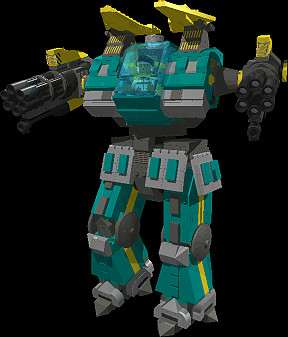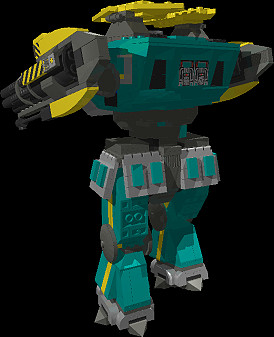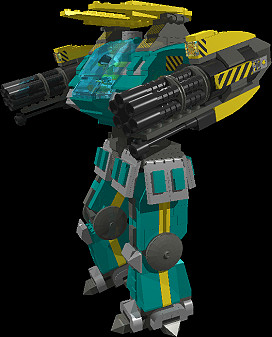 |
 |
||||
 |
|||||
|
Rifleman
(60t)
|
|||||
|
Model
by Primus
|
|||||
|
Kallon Industries on Talon found themselves in a difficult position in late 3063. While the Loyalist Twenty-second Avalon Hussars held the factory, the Seventh Federated Commonwealth RCT had been charged by Duke George Hasek to take control of the plant. With the Twenty-second dug in, the Seventh F-C cut the shipping routes into and out of the Wernke system. Their blockade disrupted production of the popular JM7-F JagerMech-while most of the components were produced locally, the sophisticated Targeting Computer came from Salem. Local stockpiles could only support one of the two JagerMech lines. As a stopgap measure, Kallon Industries examined the possibility of mating the rotary autocannons/5 (sans the targeting system) with another chassis. Earlier research had produced a Rifleman prototype for evaluation, but now Kallon's engineers had to turn it into a product ready for the battlefield. The Rifleman's greatest problems had always been the twin bugbears of limited armor and poor heat management. While not an issue in its anti-aircraft role, these features had earned the Rifleman an inferior reputation on the battlefield. A new endo steel chassis solved the armor problem; indeed, the new version carries almost twice the armor protection of the RFL-3N. The bulky chassis required some exterior modification, however, so the design team elected to rework the exterior styling entirely. The greatest complaint thus far from the test pilots is simply the lack of CASE to protect the large ammunition bays in the torso. Eleven double heat sinks and a new weapons payload alleviated the heat problem. The old arm-mounted Magna Mk. III heavy lasers were replaced with Bright-Blossom ER medium lasers. The reduction in range and damage potential is more than balanced by the revolutionary Mydron-built rotary autocannons, which are paired with the lasers in arm mounts. As a final surprise, the design team added a set of modified McCloud Specials jump jets to improve the unit's mobility. |
 |
||||